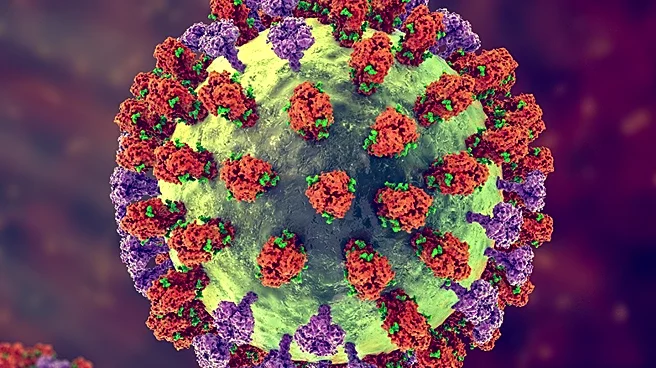What is the story about?
What's Happening?
A study has highlighted the potential for shoes to spread germs indoors, particularly on home floors where children and pets play. Researchers found that shoe soles can carry microorganisms, including bacteria like E. coli, which can be transferred to clean flooring. Despite the presence of germs, experts suggest that the risk of illness from shoe-borne bacteria is low. The study emphasizes the importance of maintaining cleanliness and considering cultural practices, such as removing shoes indoors, to minimize germ exposure. However, it also notes that hands are more likely to transmit germs than shoes.
Why It's Important?
The findings of this study are significant as they address common concerns about hygiene and cleanliness in homes. While the risk of illness from shoe-borne germs is low, the study encourages individuals to consider practices that reduce germ exposure, such as removing shoes indoors. This research may influence public health recommendations and cultural practices, promoting awareness of hygiene and the importance of maintaining clean living environments. It also highlights the need for further research into the transmission of germs in everyday settings.
What's Next?
The study may lead to increased awareness and discussions about hygiene practices in homes, particularly regarding the use of shoes indoors. Public health campaigns could focus on educating individuals about effective cleaning methods and the importance of hand hygiene in preventing illness. Further research may explore the specific types of germs found on shoes and their potential impact on health. Additionally, cultural practices related to shoe removal may gain more attention, influencing social norms and household routines.
Beyond the Headlines
The study raises broader questions about hygiene and cleanliness in everyday life, emphasizing the role of cultural practices in maintaining health. It highlights the importance of considering both scientific evidence and cultural traditions when addressing public health concerns. The findings may lead to discussions about the balance between maintaining cleanliness and respecting cultural practices, encouraging a more holistic approach to health and hygiene.
AI Generated Content
Do you find this article useful?













